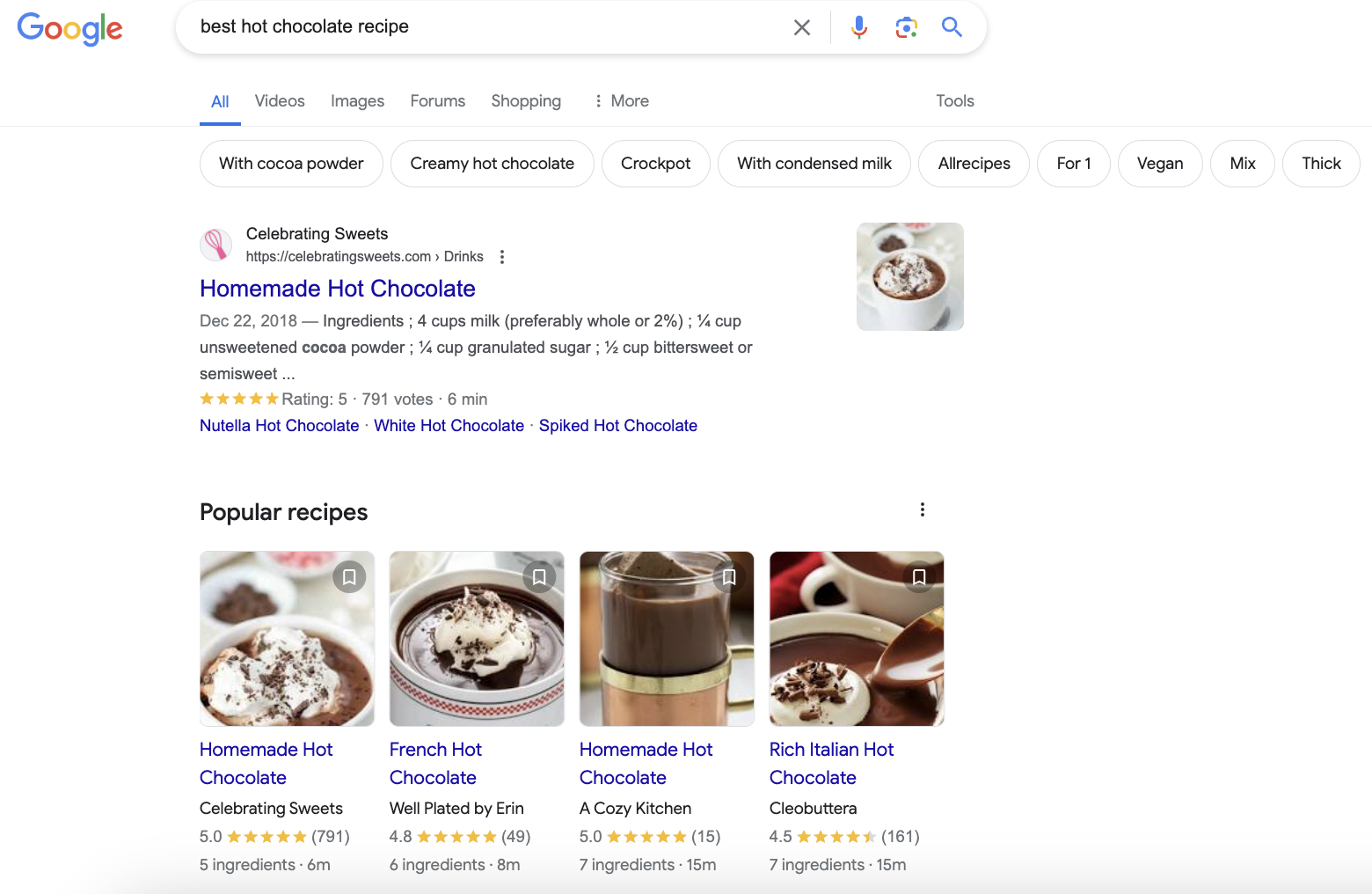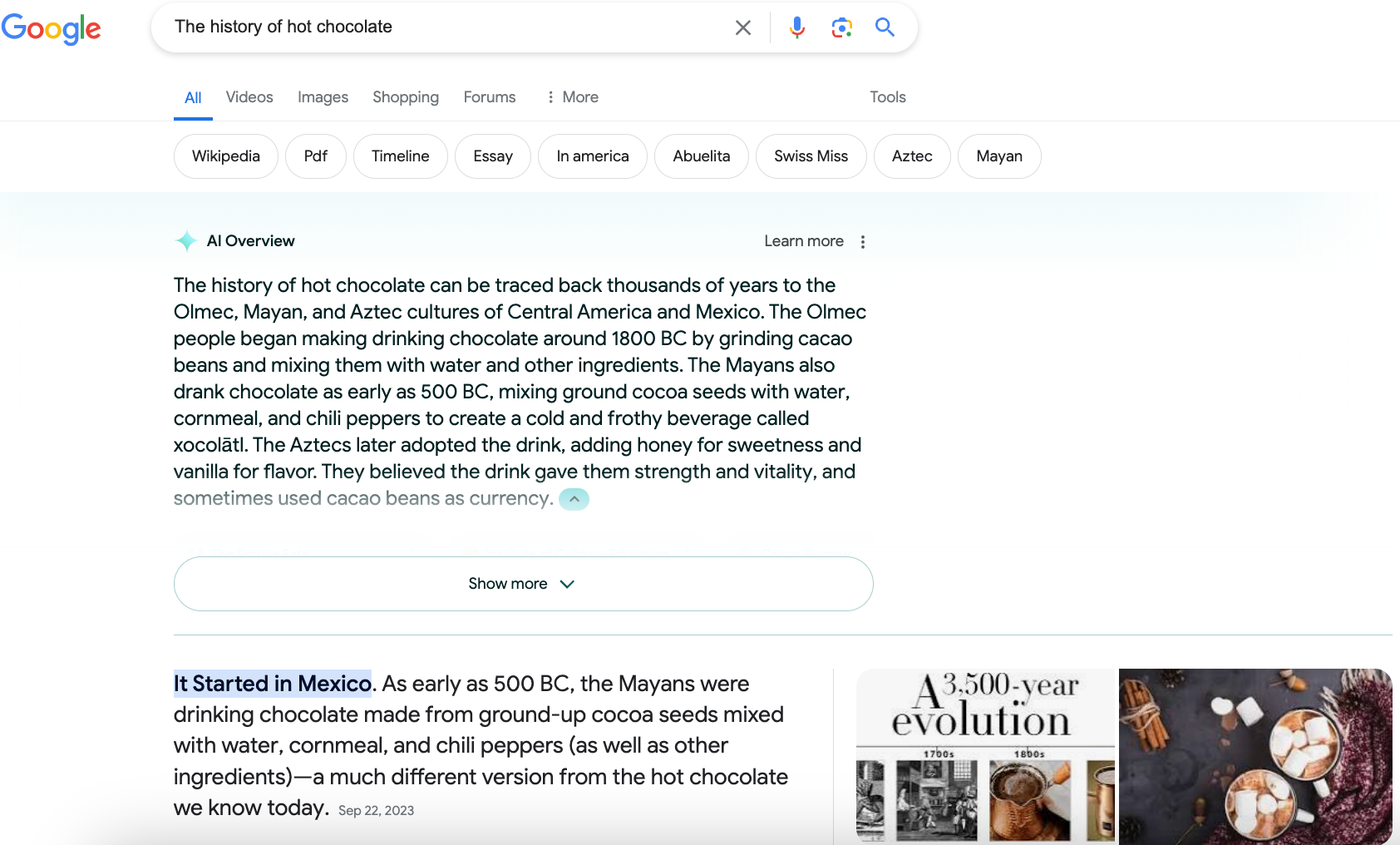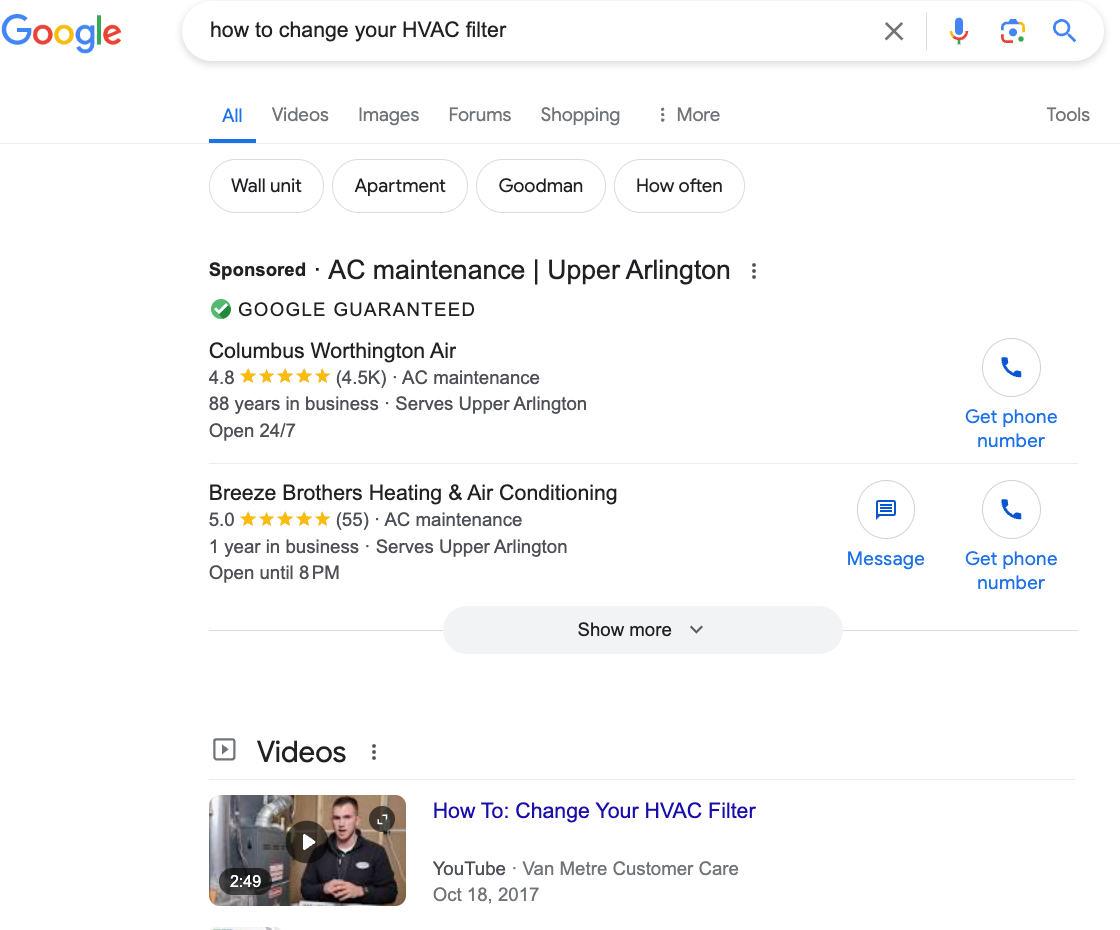What Is User Intent? It’s Your Key to Boosting Rankings, Leads, and Conversions
Topic: SEO
Published:
Written by: Bernard Huang
What is user intent?
User intent (also known as search intent, audience intent, or query intent) refers to the specific end goal someone has when they perform an online search.
In other words, it’s the reason why a person went to a search engine.
For example, someone can do a Google search to learn more about a topic (informational intent). Or they might do a search to compare products before making a purchase (commercial intent).
Each search has a different end goal, which will affect the type of content that’s most relevant to that user.
Quick definitions:
Search queries are the different words and phrases that users type into a search box to pull up a list of results.
Search intent or user intent is why a user searches a query on a search engine. Often, a user is trying to find an answer, product or service, or educational resource.
Let’s look at another example: If someone is typing in the query, [best hot chocolate recipes], they are searching for a combination of ingredients or recipes to make a great cup of hot chocolate.

Google search results for [best hot chocolate recipe] show top-rated recipes are provided to the user, with review ratings.
If you are trying to rank for the keyword [best hot chocolate recipes], you won't have much success by producing content around [What is hot chocolate] or [The history of hot chocolate].

Google search results for [what is hot chocolate] shows a knowledge card and wikipedia page for the description of what hot chocolate is.

Google search results for [history of hot chocolate] shows an AI Overview, followed by a linked result and People Also Ask questions.
Going after those keywords simply wouldn't satisfy the user's intent. Although they revolve around the same topic, these three different search queries have completely different search intents.
Watch these webinars to learn more:
Making a Hypothesis About Search Intent by Nigel Stevens of Organic Growth Marketing
How to Find New Search Intent Opportunities by JR Oakes of LOCOMOTIVE
What intent means for user behavior—and your digital marketing strategy
If you’ve been anywhere near the search engine optimization (SEO) or content marketing world, you’ve probably heard the phrases "user intent" and "search intent" thrown around. A lot.
While the terms aren’t new, they can feel like ambiguous concepts. That said, it’s important to understand what people mean when they say “search intent” and how to use it as part of your SEO strategy.
Let’s take a closer look at why understanding it is crucial to a successful SEO and content marketing strategy.
But before we dive in, if you’ve found yourself here and you already know what search intent is, you’re likely ready for the next steps.
Check out how to analyze search intent or how to optimize your content for user intent to learn how the pros do it.
Why is user intent matters for SEO
If you want to optimize those CTAs and turn them into leads and conversions, well, you better be paying attention to search intent.
Google's algorithm is designed to deliver the best search engine results page (SERP) to satisfy a user's query or keyword intent.
Therefore, the top-ranking results on search engine results pages (SERPs) must be relevant and helpful.
In SEO, search algorithms define relevance in relation to user intent.
Understanding the intent behind each keyword helps SEO strategists, marketers, and writers create posts and landing pages that will provide the most relevant content for their audience.
This is what’s known as optimizing your content for intent.
Pages optimized for intent not only have a higher chance of ranking for the target keyword or keyword intent, but they can also do a better job of converting qualified search prospects.
You can create the best sales landing page for an informational query, but a user with informational intent isn’t ready to buy.
They’re unlikely to convert and will probably bounce off a product page. So it’s also important to understand what type of content is needed to fulfill user intent.
Common mistakes in optimizing for different user intents
For example, let’s say you’re a company that sells hypoallergenic HVAC filters.
You can create the best sales landing page possible for the informational search query [how to change your HVAC filter] for your target audience, but those searching for [how to change a filter] aren’t looking for a specific product and calls to action to buy.
They’re looking for how-to content.

Search results for [how to change your HVAC filter] provides how-to video content along with recommended service providers in your area.
So it’s likely that searcher will head back to the search results page and keep looking.
And in the worst case scenario, they’ll assume your brand’s specific website won’t meet their needs in the future, which could affect your conversion rates and ability to acquire potential customers for transactional searches over the long-term.
Keeping that example in mind, it’s easy to see that satisfying intent throughout your content strategy helps you improve click-through rate and decrease bounce rate (or engagement metrics in Google Analytics).
That way, you’re optimizing for better engagement and user experience—in addition to SEO.
And that kind of optimization makes both the humans and search engines happy.
How search engines determine user intent
A search engine considers several factors and data to determine the best results for a user's search query.
For example, Google will show different results for an individual searcher based on a variety of data about the keyword phrase(s) they use and other factors, including a person’s:
Location
Search history
Device used to search
Time of day they’re searching
Language
In addition, Google uses algorithms to classify entities (or a well-defined idea or thing) within a search query. Google understands entities like people, places, organizations, things, or even concepts.
And these entities help define and determine a user’s search intent behind the specific keywords they pop into that search bar.
In SEO, it’s commonly understood that there are four basic types:
Informational intent: Examples include [what is the keto diet?] or [why do cats yawn?]
Navigational intent: Examples include [AEP electric bill pay online], [Squarespace customer service], or even social media navigational searches like [shaquille oneal instagram]
Transactional intent: Examples include [amazon desk chair], [pizza delivery near me], [designer for web pages]
Commercial intent: Examples include [top ecommerce SEO courses], [best women’s hiking boots], [best affordable smartphones]

This chart showcases the four basic types of search intent with examples.
While this might be a hot take, I believe user intent can be more nuanced than this. User search queries, and the entities found within them, can also tell your if there is local intent, high or low intent, and much more.
Before you dive into determining the intent behind the search terms you’re strategizing your high-quality content for, you’ll need to understand the different categories of user search intent.
LEARN MORE: Check out Types of search intent: Are there just 4? to learn more about the different categories.
However, if you’re already familiar with the different types of user intent and you’re ready to learn how to analyze or optimize your content for it, check out the resources for further reading below:
How to analyze search intent in the era of AI Overviews: In this guide, you’ll get a step-by-step look at how to analyze SERP pages for user intents, including examining featured snippets, AI Overviews, and People Also Ask search results.
How to correctly optimize your content for search intent: Here you’ll learn how to optimize your content based on user needs and make the most of your organic traffic.
Why is keyword research important? This guide will walk you through how to research keywords for the intents your targeting

Contributing authors and updates
The original version of this article was published November 22, 2022. It was updated June 25, 2024, to include updated education on current best practices by the Clearscope team.
Topical Authority: The What and Why
Discover how topical authority improves your SEO results and the best practices you can use to improve your website’s credibility.
Read more5 Effective Internal Linking Strategies to Improve Your SEO
Advance your internal linking efforts by exploring several effective strategies that can help improve user experience, engagement, and SEO performance.
Read moreShould You Use Ai-Generated Content in Your SEO Strategy?
If you’re looking for ways to save time, AI content generation is a tempting option. But does it work? Should you use it? Check out our guide to learn more.
Read more